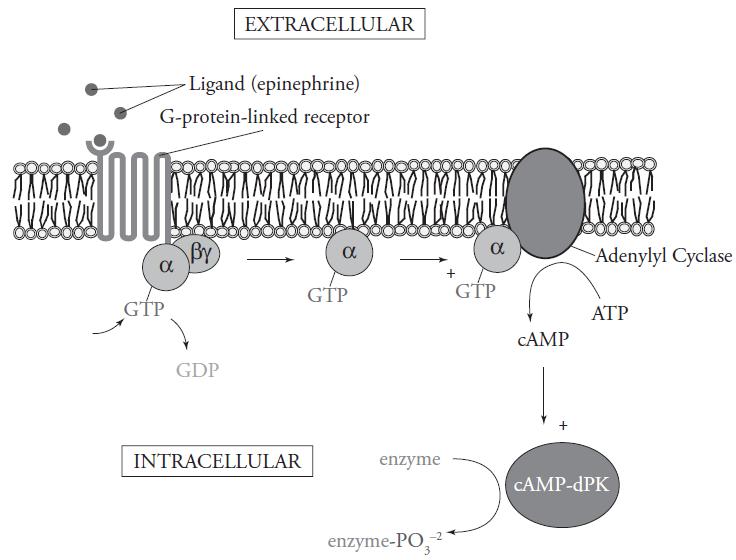What does a GPCR's capability of making a ligandinduced conformational change allow? (A) Binding of the ligand
Question:
What does a GPCR's capability of making a ligandinduced conformational change allow?
(A) Binding of the ligand to the phospholipid head groups within the membrane
(B) Communication between the outside of the cell and the inside of the cell
(C) A solid attachment to the intermembrane region of the cell membrane
(D) Intracellular binding of the GDP-associated G-protein complex
G-protein coupled receptors (GPCRs) are a common type of protein receptor containing seven transmembrane segments and bearing intracellular and extracellular portions. The structure of a typical GPCR and its associated partners is shown below. GPCRs are coupled to G-proteins consisting of three subunits (a, β, and γ) that bind the nucleotides GTP or GDP on the intracellular side of the GPCR. The presence or absence of a ligand on the extracellular side of the GPCR determines whether GDP or GTP will bind to the intracellular G-protein. Extracellular ligand binding initiates GDP being exchanged for GTP and the separation of the G-protein. One subunit will travel to join with a secondary partner and will initiate a cascade of signaling effects within the cell. In the example shown below, the secondary partner is adenylyl cyclase and the signaling is cAMP upregulation.
Step by Step Answer:

The Princeton Review AP Biology Premium Prep 2023
ISBN: 9780593450659
2023 Edition
Authors: The Princeton Review





